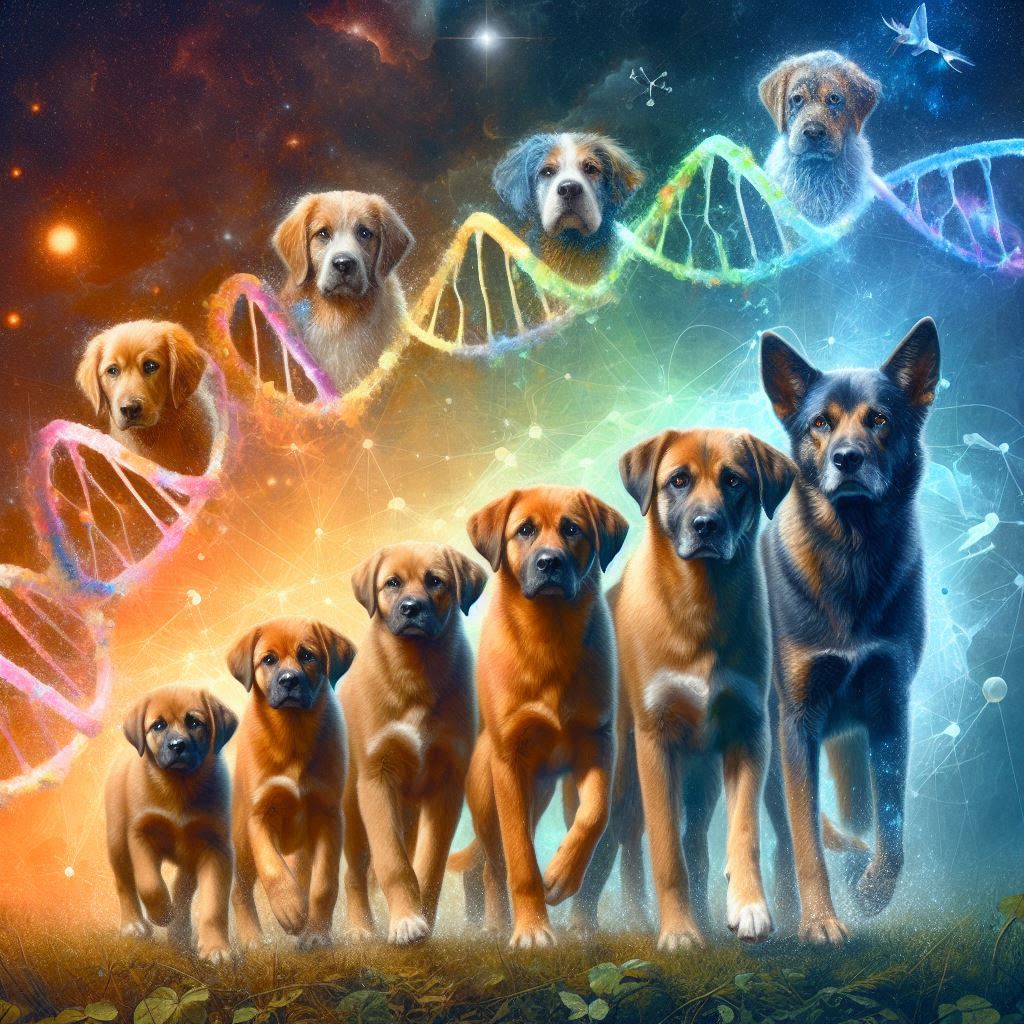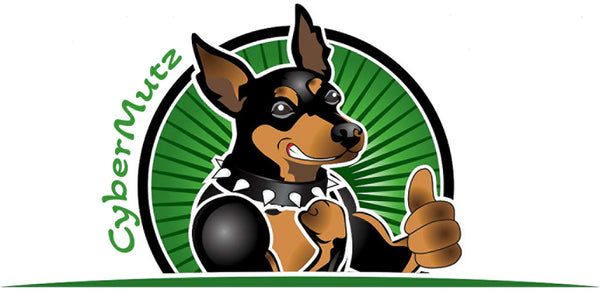
The Genetics of Dog Coats – Why Some Breeds Change Color Over Time
Share
The Genetics of Dog Coats – Why Some Breeds Change Color Over Time
Have you ever noticed that some dogs change color as they age? Maybe a puppy born with a golden coat turns into a deeper, darker shade over time, or a breed known for its blue-gray coat starts showing streaks of white as it matures. While it’s common for many animals to experience changes in color, the genetics behind these transformations in dogs are fascinating. In this post, we’ll explore the genetics of dog coats and dive into why some dogs change color over time.
🐾 Understanding the Genetics Behind Dog Coats
A dog’s coat color is determined by specific genes inherited from their parents. These genes not only decide the primary color but can also influence patterns, shades, and whether a dog’s coat might change over time. The main factor behind this genetic variation is the complex interaction of dominant and recessive genes that affect pigment production in the skin and hair.
Here are some key elements that influence a dog’s coat color:
• Melanin: This is the pigment that gives color to a dog’s fur, skin, and eyes. There are two types of melanin that affect coat color: eumelanin (which can be black or brown) and pheomelanin (which produces yellow, red, and tan colors).
• Genetic Variation: A dog inherits one copy of each gene from each parent, and this determines which coat colors or patterns emerge. Some breeds have specific genetic traits that can cause them to change colors as they grow older.
🧬 Why Do Some Dogs Change Color Over Time?
While most puppies are born with a relatively consistent coat color, some breeds undergo noticeable changes as they grow. These changes happen for a variety of reasons and are often influenced by genetic mutations or environmental factors.
Here are the most common reasons why a dog’s coat color might change:
1. Coat Color Darkening with Age
Some puppies are born with lighter coats that darken as they mature. This is particularly common in certain liver or cream-colored breeds, like the Labrador Retriever or the Doberman Pinscher. The darkening of the coat can be caused by an increase in the production of eumelanin as the dog ages.
• Example: Many golden retrievers are born with cream or light yellow fur, but their coat darkens to a deeper golden hue as they mature.
2. Graying or Whitening of Fur
As dogs age, their fur can start to gray, just like humans experience graying hair. This process is often related to a decrease in pigment production. The graying process is influenced by genetics, and it can be more pronounced in some breeds than others. The silver or gray color typically appears around the dog’s face, muzzle, or eyes and is a sign of aging.
• Example: The Shih Tzu and Schnauzer are known to develop gray hairs around their faces as they age.
3. Seasonal Coat Color Changes
Some breeds are known to experience subtle changes in coat color with the seasons. These changes are often related to environmental factors and are regulated by hormonal changes and temperature shifts. Winter coats tend to be darker, thicker, and fuller, while summer coats are lighter and less dense. These seasonal changes may cause slight alterations in the coat’s appearance.
• Example: Alaskan Malamutes and Siberian Huskies may have a darker, thicker winter coat and a lighter, shorter summer coat.
4. Gene Mutations and Color Shifts
In some cases, specific mutations in the genetic codes of dogs cause their coats to change color over time. These mutations may result in what’s known as “age-related graying” or may cause dramatic shifts in coat color due to altered pigmentation genes.
One such mutation is in the K locus gene, which influences the color pattern of dogs. If a dog has the “dominant black” gene (KB), their coat may shift to a darker color as they mature.
• Example: A Chihuahua or Yorkshire Terrier might go through a noticeable coat color shift due to genetic factors and age.
5. Coat Fading Due to Sun Exposure
Certain breeds can experience color fading due to prolonged sun exposure. The sun can bleach out the pigment in a dog’s fur, causing the color to fade. While this isn’t technically a genetic change, it’s important to consider when looking at the overall appearance of a dog’s coat.
• Example: Cocker Spaniels with darker coats can see their color fade slightly after extended exposure to the sun.
🐕 Which Breeds Are Most Likely to Change Coat Color Over Time?
Not all dogs experience dramatic changes in coat color, but several breeds are more likely to undergo noticeable transformations as they age. Here are some breeds that are known for their color-changing coats:
1. Doberman Pinscher
Dobermans are known for their distinctive black-and-tan coats, but as they age, their coat may darken, or the tan areas can deepen in color. Puppies born with a more subdued color may experience a deepening of their coats as they mature.
2. Labrador Retriever
Labradors are often born with light cream or yellow coats that darken over time. This breed can go from a pale yellow to a deeper, more vibrant gold as they grow older.
3. Dachshund
Dachshunds often change color as they mature, especially those with red or cream-colored coats. These dogs can start with a light, almost apricot-like color and gradually develop a deeper red or brown coat as they grow.
4. Poodles
Poodles may change color slightly as they age. A black poodle may turn into a blue or silver poodle over time, and apricot-colored poodles might become lighter with age.
5. German Shepherds
German Shepherds may experience a shift in coat color as they grow. A dog born with lighter fur might develop darker hues or a more pronounced black-and-tan coloration as they mature.
6. Huskies
Huskies are known for their striking coats, but their color may change over time. These changes could involve a fading of the darker pigments, giving them a more uniform silver or gray appearance as they age.
7. Chihuahua
Chihuahuas are born with relatively consistent colors, but some may see a shift to a darker coat color as they mature. Chihuahuas with cream, fawn, or tan coats may see their color become deeper over time.
8. Cocker Spaniels
Cocker Spaniels often experience subtle changes in their coat color due to both aging and sun exposure. Their golden coats may deepen or lighten slightly as they mature.
🧑🔬 Conclusion
The genetics of dog coats is a fascinating topic that combines inheritance, biology, and environmental factors. While some dogs naturally undergo changes in color as they age, others may experience subtle shifts in response to the seasons, genetics, or external factors like sunlight. Understanding the genetics behind these changes can help dog owners anticipate and appreciate the beauty of their pet’s evolving appearance.
If you’re a dog owner and notice that your dog’s coat is changing color, it’s usually a natural process tied to their genetics. However, if you’re unsure or if the changes are drastic, consulting a vet can provide reassurance and help you understand your pet’s health.
CyberMutz.com (Dog-Themed Apparel & Accessories)
“CyberMutz.com – Explore a unique collection of dog-themed apparel, accessories, and gifts for pet lovers. Shop stylish, high-quality designs featuring your favorite dog breeds!” Category Page Descriptions: Dog Breed T-Shirts: “Show off your love for dogs with our exclusive breed-themed T-shirts. From German Shepherds to Chihuahuas, find high-quality, comfortable tees celebrating your favorite pup!” Dog Breed Pet Tank Tops: “Keep your furry friend stylish and comfortable with our dog breed-themed pet tank tops. Perfect for small and large dogs, these unique designs are a must-have!” Funny Dog-Themed Apparel: “Love dogs and humor? Our funny dog-themed apparel blends style with witty canine-inspired designs. Shop now for T-shirts, hoodies, and more!” Personalized Dog Merchandise: “Customize your dog lover’s gear with our personalized pet-themed apparel and accessories. Create a one-of-a-kind look for yourself or a perfect gift for a fellow dog enthusiast!”
CyberPussyKatz.com (Cat-Themed Apparel & Accessories)
“CyberPussyKatz.com – Celebrate your love for cats with our premium collection of feline-inspired apparel and accessories. Purr-fect designs for every cat lover!” Category Page Descriptions: Cat Breed T-Shirts: “Showcase your favorite feline friend with our stylish cat breed-themed T-shirts. From Maine Coons to Siamese, find the perfect tee for cat lovers!” Funny Cat-Themed Apparel: “Express your quirky side with our funny cat-themed T-shirts, hoodies, and more. Pawsome designs for those who love cats and humor!” Personalized Cat Merchandise: “Make it personal with custom cat-themed apparel and accessories. Create a unique gift or a special piece just for you!”
CyberMunkiez.com (Monkey-Themed Apparel & Accessories)
“CyberMunkiez.com – A fun collection of monkey-inspired apparel and accessories. Perfect for primate lovers who enjoy bold, playful, and unique designs!” Category Page Descriptions: Monkey-Themed T-Shirts: “Go bananas over our monkey-themed T-shirts! Whether you love capuchins, chimps, or gorillas, our designs bring out your wild side.” Funny Primate Apparel: “Add a touch of humor to your wardrobe with our hilarious monkey and ape-inspired apparel. Great for animal lovers and jungle enthusiasts!” Custom Monkey Merchandise: “Make it yours! Personalize your favorite monkey designs on T-shirts, hoodies, and more for a one-of-a-kind look.”
